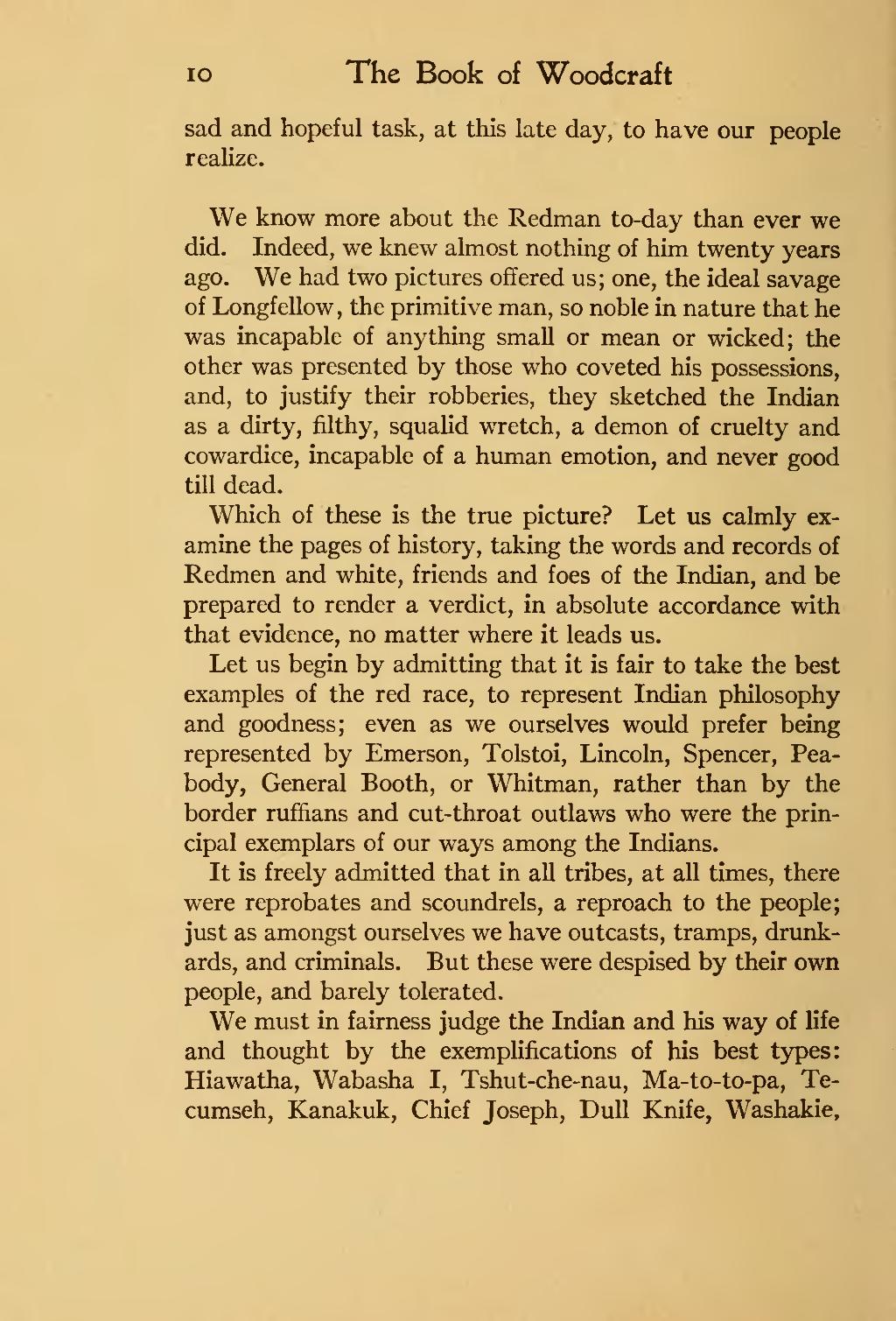Pokračování textu ze strany 41
… sad and hopeful task, at this late day, to have our people realize.
We know more about the Redman to-day than ever we did. Indeed, we knew almost nothing of him twenty years ago. We had two pictures offered us; one, the ideal savage of Longfellow, the primitive man, so noble in nature that he was incapable of anything small or mean or wicked; the other was presented by those who coveted his possessions, and, to justify their robberies, they sketched the Indian as a dirty, filthy, squalid wretch, a demon of cruelty and cowardice, incapable of a human emotion, and never good till dead.
Which of these is the true picture? Let us calmly examine the pages of history, taking the words and records of Redmen and white, friends and foes of the Indian, and be prepared to render a verdict, in absolute accordance with that evidence, no matter where it leads us.
Let us begin by admitting that it is fair to take the best examples of the red race, to represent Indian philosophy and goodness; even as we ourselves would prefer being represented by Emerson, Tolstoi, Lincoln, Spencer, Peabody, General Booth, or Whitman, rather than by the border ruffians and cut-throat outlaws who were the principal exemplars of our ways among the Indians.
It is freely admitted that in all tribes, at all times, there were reprobates and scoundrels, a reproach to the people; just as amongst ourselves we have outcasts, tramps, drunkards, and criminals. But these were despised by their own people, and barely tolerated.
We must in fairness judge the Indian and his way of life and thought by the exemplifications of his best types: Hiawatha, Wabasha I, Tshut-che-nau, Ma-to-to-pa, Tecumseh, Kanakuk, Chief Joseph, Dull Knife, Washakie, ..text pokračuje
